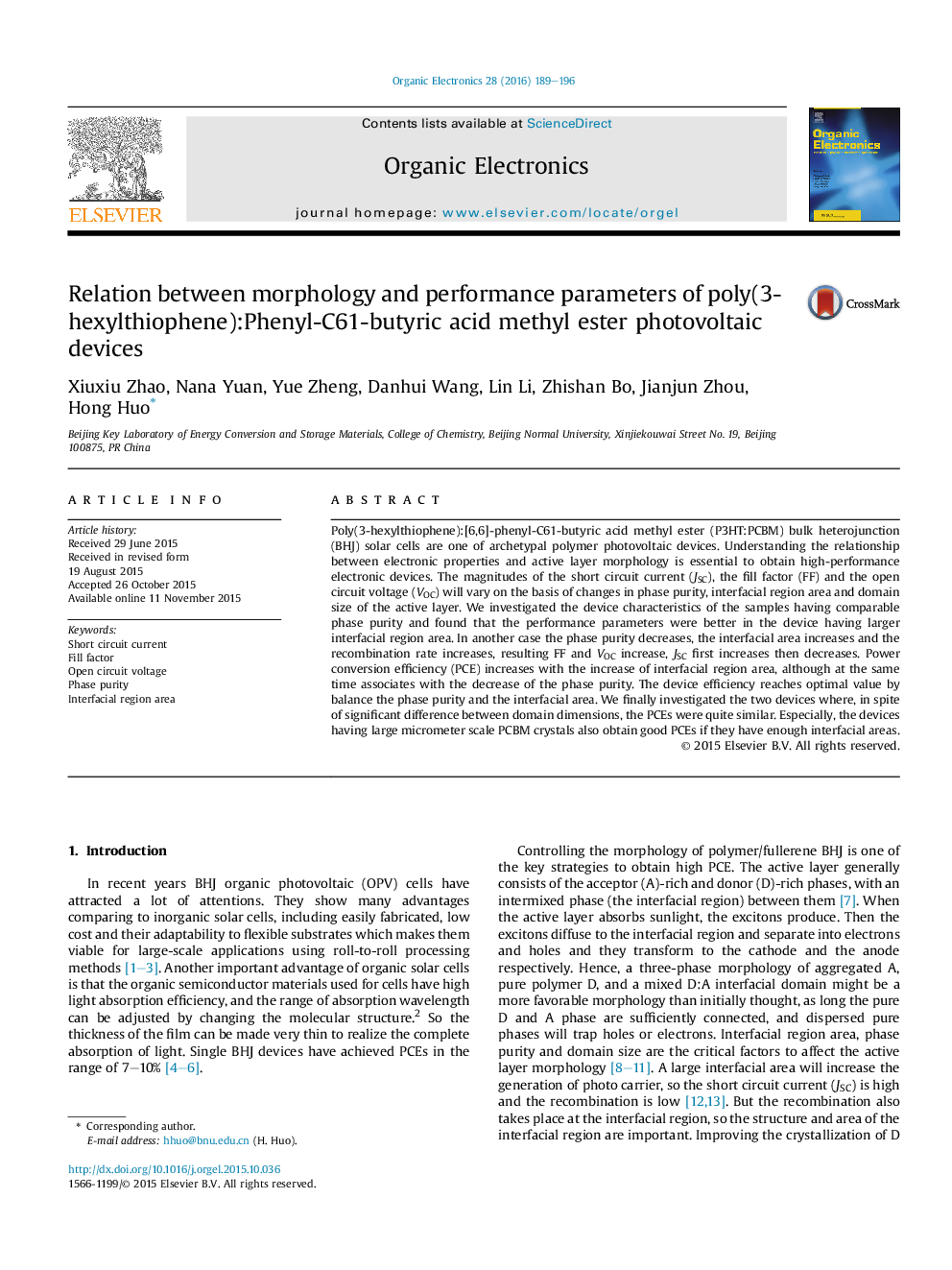| کد مقاله | کد نشریه | سال انتشار | مقاله انگلیسی | نسخه تمام متن |
|---|---|---|---|---|
| 1267132 | 1496829 | 2016 | 8 صفحه PDF | دانلود رایگان |
• We design the experiments to understand interrelationships between morphology and performance parameters.
• FF increases with the increased P3HT phase purity and the decreased PCBM aggregate thickness.
• VOC increases with the decrease of P3HT conjugate length.
• JSC relates to the interfacial region area and the phase purity of P3HT.
• The devices having large PCBM crystals can obtain good PCE if they have enough interfacial areas.
Poly(3-hexylthiophene):[6,6]-phenyl-C61-butyric acid methyl ester (P3HT:PCBM) bulk heterojunction (BHJ) solar cells are one of archetypal polymer photovoltaic devices. Understanding the relationship between electronic properties and active layer morphology is essential to obtain high-performance electronic devices. The magnitudes of the short circuit current (JSC), the fill factor (FF) and the open circuit voltage (VOC) will vary on the basis of changes in phase purity, interfacial region area and domain size of the active layer. We investigated the device characteristics of the samples having comparable phase purity and found that the performance parameters were better in the device having larger interfacial region area. In another case the phase purity decreases, the interfacial area increases and the recombination rate increases, resulting FF and VOC increase, JSC first increases then decreases. Power conversion efficiency (PCE) increases with the increase of interfacial region area, although at the same time associates with the decrease of the phase purity. The device efficiency reaches optimal value by balance the phase purity and the interfacial area. We finally investigated the two devices where, in spite of significant difference between domain dimensions, the PCEs were quite similar. Especially, the devices having large micrometer scale PCBM crystals also obtain good PCEs if they have enough interfacial areas.
The performance parameters of OPV devices have been determined by the combinative effects of phase purity, interfacial area and domain size. For the devices having comparable phase purity, the performance parameters are better in the device having larger interfacial region area. The devices can obtain the similar PCEs in spite of having significant difference between domain dimensions: one has large micrometer scale PCBM crystals, and another has nanoscale phase separation.Figure optionsDownload as PowerPoint slide
Journal: Organic Electronics - Volume 28, January 2016, Pages 189–196
